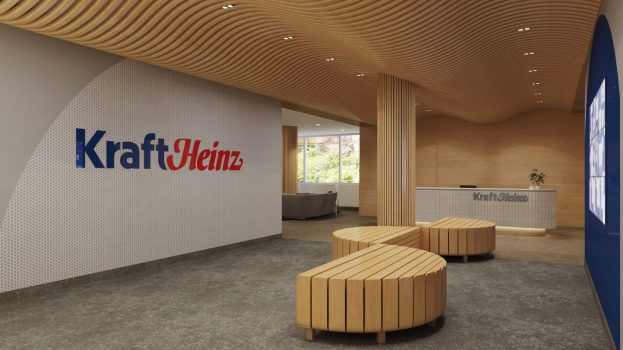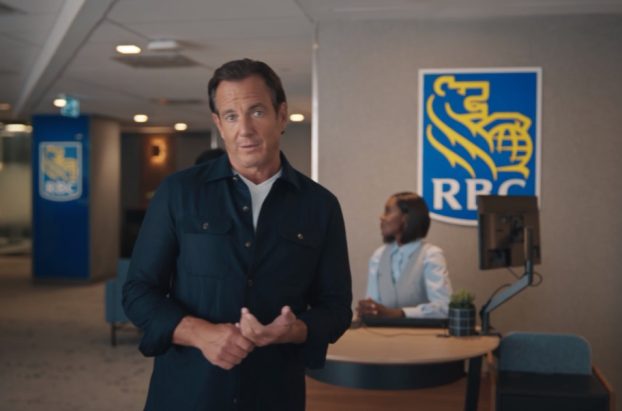No stranger to AOY accolades, Geoffrey Roche, Christina Yu & co. are back with a solid fourth-place showing, the best ranking for Lowe Roche since its Bronze win in 2006. (In a former incarnation as Geoffrey B. Roche and Partners, the agency took the Gold in 1993, and again in 1997 as Roche Macaulay.) The 50-strong agency welcomed new president Stephanie Nerlich over from BBDO this year, and picked up work from Miele, Heart & Stroke Foundation, RIM and Stella Artois.
CASES:
ALS Society sings for a cure
ALS, also known as Lou Gehrig’s disease, is a progressive and fatal neuromuscular disease that causes the degeneration of nerve cells in the brain and spinal cord that attacks 3,000 people each year. In 2008, awareness was very low in Canada, but the Toronto-based ALS Society was determined to put a face to the disease and get men and women between 30 and 60 thinking about ALS with their hearts, minds and wallets.
Lowe Roche wanted the audience to visualize the disease and empathize with those experiencing it. The sad reality of ALS is that it gradually causes your body to lose its ability to receive signals from the brain. The creative centered on this frightening fact.

Both television and radio emphasized the progressive nature of the disease. In the spot ‘Head and Shoulders,’ a man struggles through the various stages of ALS, gradually losing the use of his body parts. The iconic children’s song ‘Head and Shoulders’ powerfully replaces dialogue. Print focused on the everyday tasks ALS sufferers need help with: a boy putting on his dad’s shoes, a woman helping her husband shave. In each ad, a broken maze-like illustration runs from the brain to a body part of each ALS patient – a stark demonstration of how even the most mundane tasks become complex challenges for those suffering from this disease.
The spot aired nationally and received extensive media coverage and publicity. Online donations to the ALS Society increased 74% with ALS attributing all the gains to the campaign. Lowe Roche received accolades from both those living with the disease and the people around them.
Stella Artois gets crafty
A beer with one of the highest image ratings in the specialty import category, Anheuser-Busch InBev’s Belgium-based Stella Artois was under siege by wine and other sophisticated spirits – particularly during the critical Christmas season, when alcohol sales peak. Lowe Roche was asked to create a holiday-specific global campaign to help solidify share. It had to work in over 12 languages, while keeping true to the core brand idea that ‘perfection has its price.’
The discovery process revealed that Stella Artois was originally brewed as a Christmas specialty beer. Lowe Roche crafted a campaign that celebrated this heritage.
Using the equity from an earlier outdoor campaign centering on intricate paper cut-outs, the agency produced a cinema/television spot celebrating a craftsman whose creations come to life in the dead of night to christen a glass of Stella Artois. Online, users could send a star to loved ones as an invitation to meet during the holidays. It echoed the look of the cinema and created a buzz on blogs and social networks around the world.
With very little media support, over 100,000 users visited the site during the Christmas period, spending over two minutes per visit. And over 50% of users sent the star greeting, generating even more traffic. The success of the campaign allowed Stella to reach its goal of solidifying their share through the critical holiday season.
Purina schools puppy owners
In recent years, competition in the pet food category has intensified, causing Purina Puppy Chow to slip from the leading position. This was a major concern for Mississauga, ON.-based Nestlé Purina Canada considering the puppy segment is the gateway to the more lucrative long-term adult dog segment. Lowe Roche set out to cement the brand’s position as the puppy authority, ultimately increasing sales of Puppy Chow.
Research found that 40% of dogs are surrendered to shelters or abandoned due to the belief that they are ‘bad dogs.’ In most cases, lack of knowledge and appropriate training is the real culprit. Welcome to ‘Puppy School.’

The agency built the ultimate puppy training portal, with an online workbook, step-by-step training videos, quizzes, downloadable lessons, checklists and training logs. To support the nervous demographic of first-time puppy owners, the site featured a live FAQ staffed by experts. And mobile access made puppy training easier in the backyard or the park.
Offline, an integrated campaign included print, a media tour starring Purina’s puppy teacher and school bus stunts to generate interest.
‘Puppy School’ passed with flying colours: users have flocked to the site, sharing video content and ordering the free welcome kits. Puppy Chow shipments have increased 12%, and Purina’s number one in the category once again.
Toronto Zoo melts the ice
With the recent return of the polar bear, the Toronto Zoo wanted to raise awareness of the crisis facing these colossal creatures – climate change. As the sea ice shrinks, so does their chance of survival.
Seeing is believing, so Lowe Roche knew if they could demonstrate this tragedy simply and with conviction, Canadians would take notice. The agency created massive, constantly melting installations that demonstrate the urgent need for action and support for the zoo’s conservation efforts.

Placed in the heart of downtown, solid icebergs over ten feet tall appeared as if transported straight from the Arctic itself. Large imitation polar bears stood atop the icebergs. Made of over twenty huge blocks of ice and weighing nearly four tons, they slowly melted in Toronto’s summer sun. As the icebergs melted, the position of the polar bears grew more and more precarious until the iceberg dramatically collapsed along with the bear itself. A sign reading ‘Polar Bears Can’t Support Themselves,’ stood beside the fallen bears.
The buzz created around the city was huge. The people of Toronto embraced the installations in droves, sharing it on Facebook, Twitter and Flickr. The media made it their cause with features on CP24 and Breakfast Television. And the Toronto Zoo website received increased clickthrough for its conservation effort. All proof that polar bear conservation doesn’t have to be conservative.
Audi Canada steps out of the box
One of the last of the premium automakers to introduce a midsized SUV, it seemed 2009 would be a challenging year for Audi. January sales declined 32% versus 2008, and Mercedes-Benz was upping media spend for its midsized SUV by 29%.
As the most significant portion of Ajax, ON.-based Audi Canada’s marketing spend in 2009, the Audi Q5 launch needed to not only sell the allocation of Q5 launch vehicles, but to increase interest in the brand among forty-something professionals.
Consumers were ready for a sleeker, smaller, more efficient SUV. To call attention to the old-fashioned style of competitors, the agency created a cardboard box as an icon to represent the entire category and juxtapose it with the sexy Q5.

Media had to be bold as well. Full-sized cardboard SUVs met the crowds at the Toronto International Car Show. A dominant billboard buy with newspaper and magazine followed with faux reviews of the ‘Box,’ as well as classified ads and executions on elevator doors. Provocative web banners and an over-the-top viral garnered thousands of hits on the web. Dealers were incented with kits containing a miniature version of the Box revealing a model Q5. Boxes parked alongside the new Q5 were ticketed and towed away.
While the rest of the auto industry is down 16.5% year to date, Audi is up 11%. The Audi Q5 sold 50% above projected targets, accounting for the majority of the sales increase. April was Audi Canada’s best sales month of all time and May’s sales were a staggering 52% over last year. The launch cars were sold out two months in advance of expectation. Key brand measures have increased dramatically with each passing quarter.
Jump to:






















